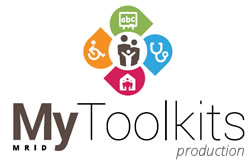Co-Design is rewarding in the short-term, but ideally aims to create long-term strategies for improving the standards of care for consumers and carers living with complex health conditions. Longitudinal data collected over an extended period, in a consistent and structured way, is essential to developing services that cater to the ever-changing needs of consumers, guided by the best quality evidence.
![]()
Every communication between health professionals and consumers or carers, both written and verbal, will generate information that can be recorded. Both qualitative data (e.g. suggestions, feedback, informal conversations) and quantitative data (e.g. statistics regarding consumer demographic data or health service usage) can provide guidance for consumers, carers and professionals collaborating together to develop or improve a service.
This data must be collated centrally and recorded securely. Wherever personal information is stored, privacy standards must be maintained, ensuring that access to data is reserved only for those who were given consent to do so. In some cases, de-identification of data is appropriate (e.g. in research study databases).
Depending on the nature of the database, the responsibility may lie primarily with consumer groups (e.g. contact lists) or health services (e.g. research data). Either way, the Co-Design approach ensures that consumers, carers and professionals work together to decide what information is collected, where it is stored and how it will be used.
Considerable time and resources go into the creation and maintenance of a data system. Programs that generate spreadsheets, such as Microsoft Excel, are widely used to create databases. Health professionals have seldom received extensive training in these programs during their education, while consumers employed in other industries may be quite familiar! Resources must be allocated and responsibilities designated for data entry and ongoing database management. Training in Microsoft Excel and database management should be offered to those with designated responsibility for data entry and ongoing database management. Short courses are widely available through community colleges, TAFE and online (and some have a health focus).
To ensure that electronic information is stored securely, systems must be backed up regularly. Data must be saved in several locations- including networks or internet based ‘cloud’ storage locations – to ensure that data is safeguarded from loss due to failure or damage to an individual computer or hard drive.
Putting the right systems in place and ensuring that those professionals or consumers are committed to sustaining them over time is critical to effective data management. Where statistical analysis is required additional software may be required, such as Stata or IBM SPSS. These programs require specialised expertise often beyond the scope of professionals involved in clinical health services. Consultation with academics and researchers is advised, to ensure that data is collected and analysed in a manner most compliant with research requirements.
Where statistical analyses are performed, careful attention must be paid to providing explanations and reporting outcomes in clear, everyday language. Consumers, carers and professionals should work together in this process, to ensure that findings are reported in an understandable way for all involved, with a focus on implications for meaningful changes in service direction.




